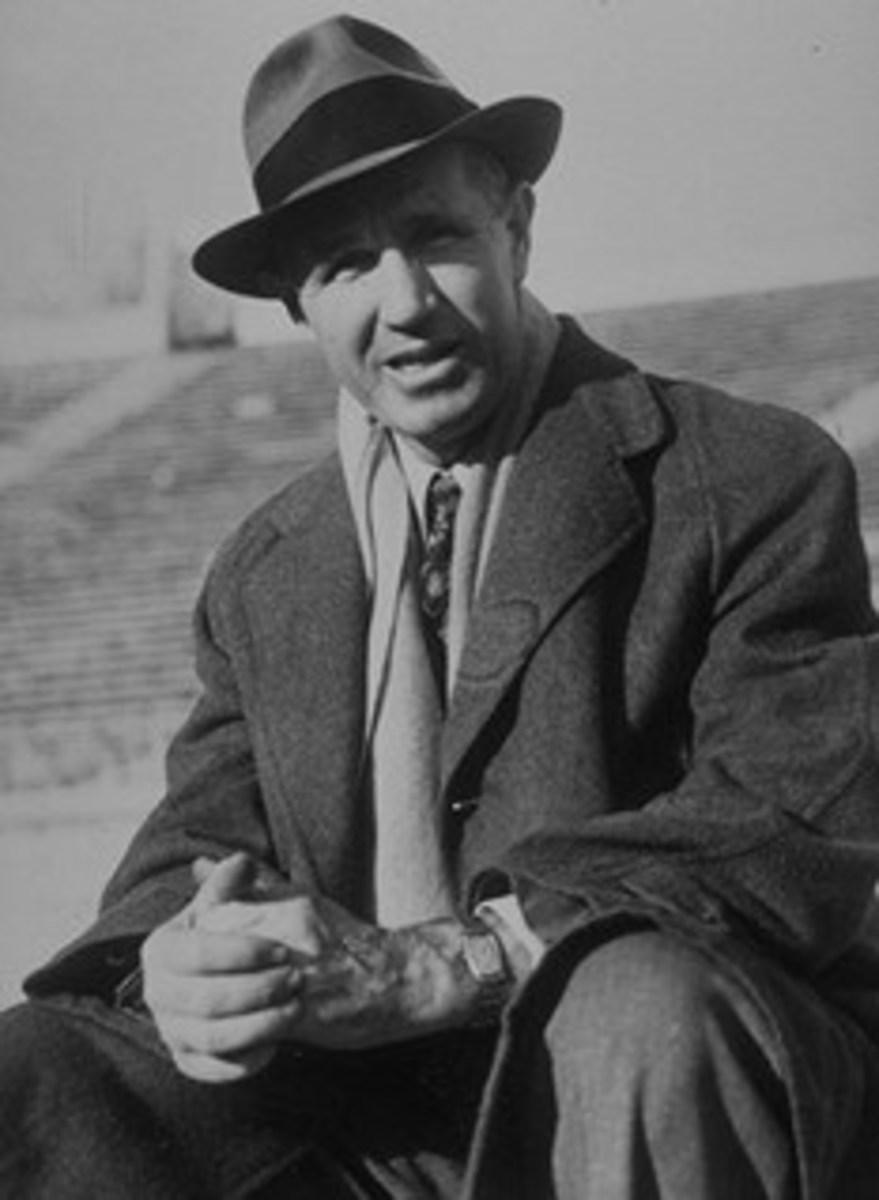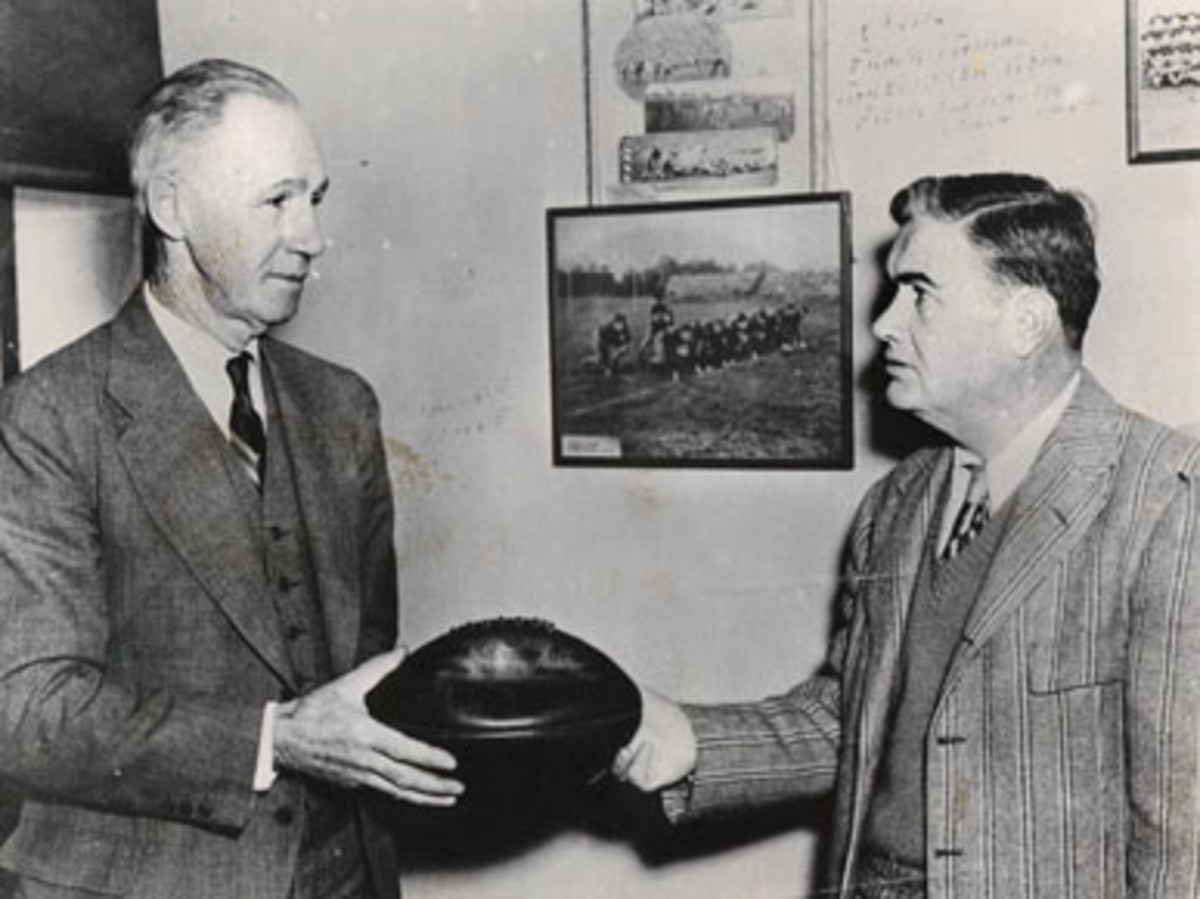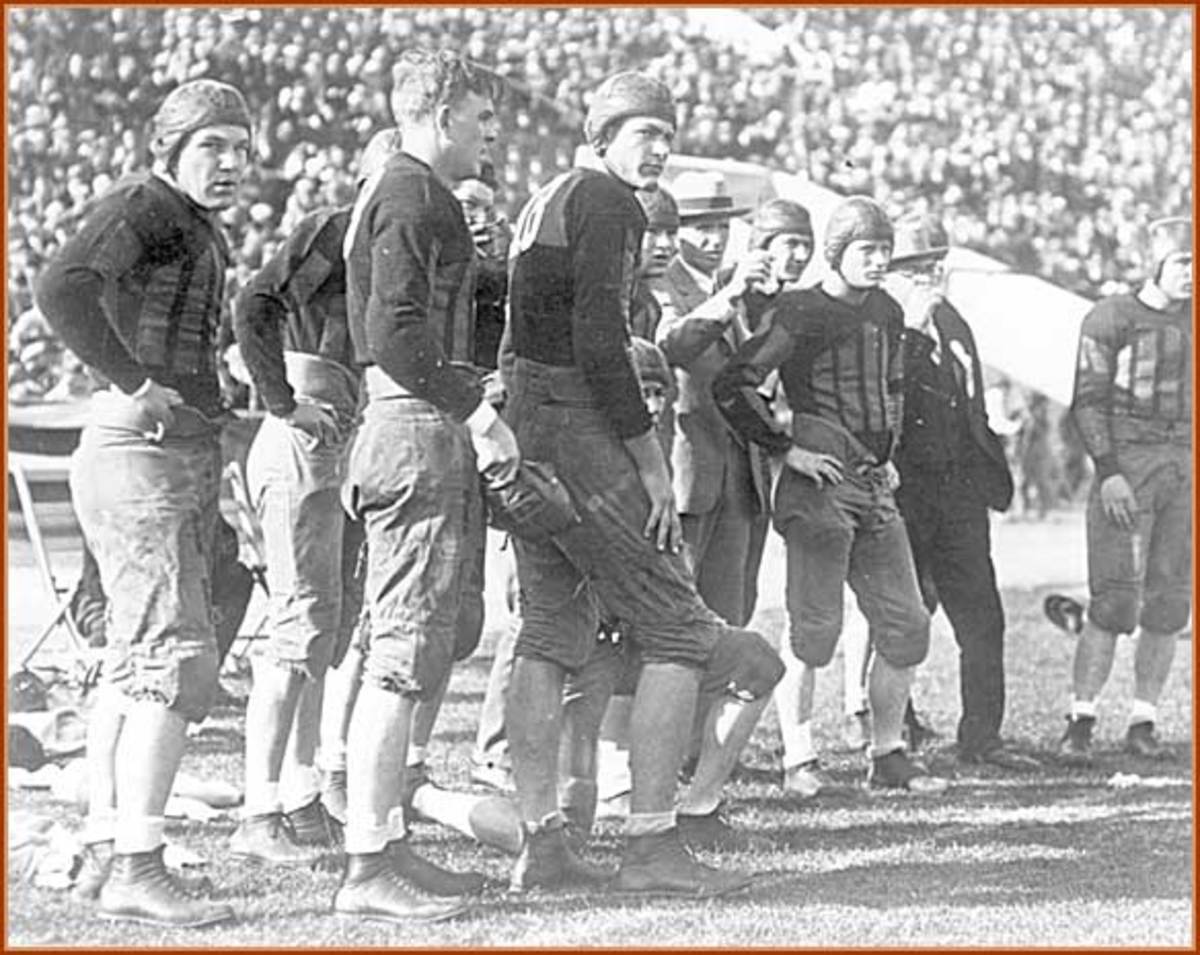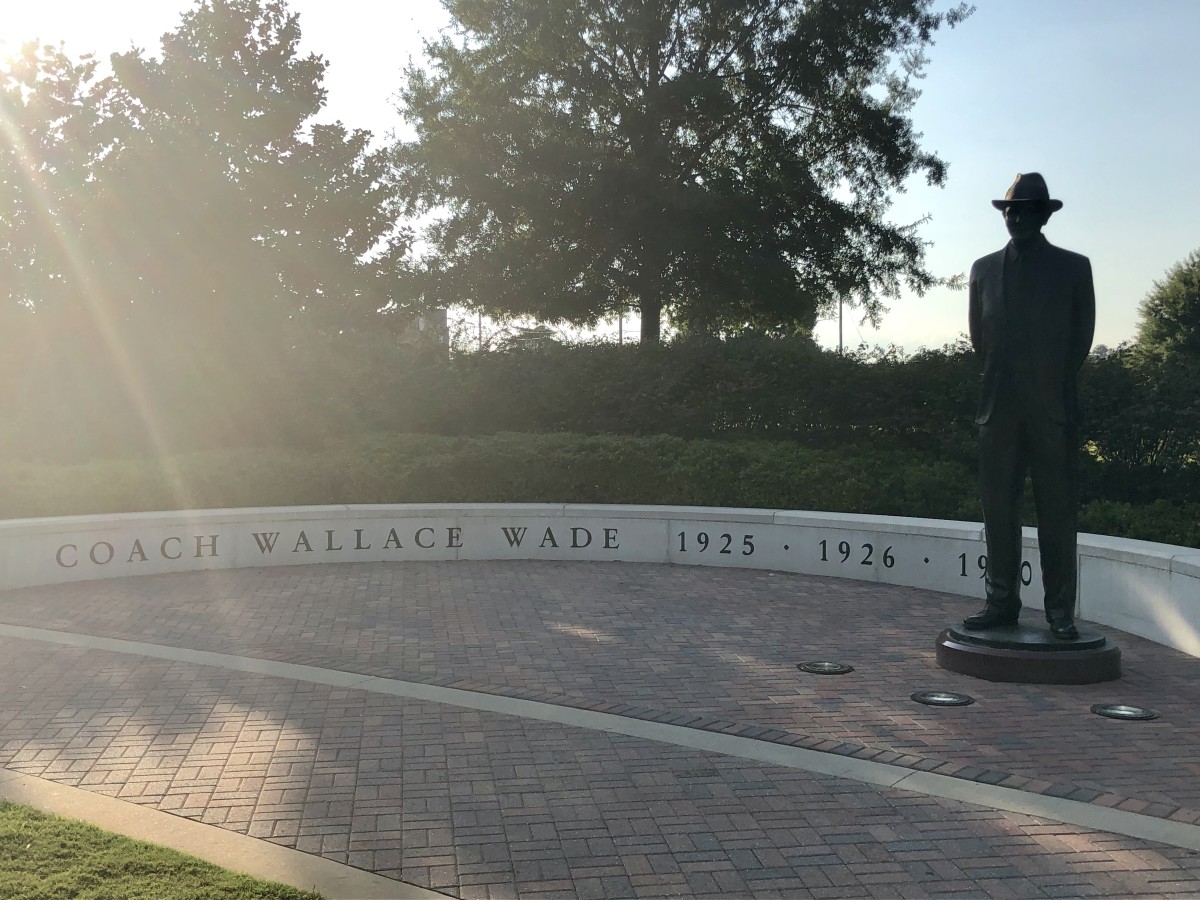Throwback Thursday: Wallace Wade
Wallace Wade was known for being a tough disciplinarian and a perfectionist before Dr. George Hutcheson Denny hired him to take over the Alabama football program prior to the start of the 1923 season. Not only had be been a star guard at Brown, and played in the 1917 Rose Bowl, but was also a cavalry captain during World War I.
“The best you can do is not enough unless it gets the job done,” Wade was known for saying.
His first season produced a 7-2-1 record, but one of the losses, a 23-0 pounding at Syracuse, was the game he claimed taught him more about football than any other.
Apparently he learned a lot because Alabama subsequently put Southern football on the map and won its first national championships.
The run began in 1924, when Alabama went 8-1 and captured its first conference title. The Tide won its first three game by a combined score of 130-0, and didn’t yield a point until its seventh game, a 42-7 victory against visiting Kentucky. A week later, a 17-0 loss to Centre College prevented perfection, but a dominating 33-0 Thanksgiving victory against Georgia clinched the Southern Conference championship.
Not only did the Tide defend its title in 1925, but after outscoring nine regular-season opponents 277-7, it received an invitation to play Washington in the prestigious Rose Bowl. Although Alabama was considered a heavy underdog, it pulled out a 20-19 victory that had long-reaching effects, and gave the region a dose of much-needed pride.
With the national championship in tow, Alabama continued its winning ways in 1926, which included a third straight Southern Conference title, and returned to the Rose Bowl. Although the Tide didn’t win, the 7-7 tie against Stanford answered any questions about whether the previous year had been a fluke, and again Alabama could claim at least a share of the national title.
Wade had one more title run in 1930, even though he had turned in his resignation at the end of the previous season but agreed to stay on for the final year of his contract before heading to Duke. It was arguably his best team yet, and the only points Alabama yielded that season were seven to Vanderbilt and six to Tennessee, while the offense cranked out 271.
A season-ending 13-0 victory against Georgia meant both a perfect record and fourth Southern Conference championship, resulting in another invitation to the Rose Bowl to play Washington State. This time the game wasn’t close, and after winning his third national championship, the coach was carried off the field by his players.
Wade compiled a 61-13-3 record at Alabama, and his teams went 110-36-7 at Duke from 1931-50, though he returned to service during World War II. Many of the losses came in the years after the war, prompting Wade to say, “I’m no longer tough enough.”
Durham Herald writer Jack Horner had a different take: “The truth was that Wade mellowed after seeing 135-pounders die for America as gloriously as 200-pounders.”
Wallace Wade





The Iron Dukes
Although Wallace Wade never won another national championship after leaving Alabama for Duke, he came extremely close. The 1938 team is the one most bragged about, as the “Iron Dukes” finished the regular season undefeated, untied and unscored upon, closing with a 7-0 victory in a snowstorm against No. 4. Pittsburgh. However, that still only earned a No. 3 ranking in the final Associated Press poll, and Duke subsequently lost in the Rose Bowl on a last-minute touchdown by Southern California.
The Blue Devils were No. 2 at the end of the 1941 season, but instead of traveling back to California, hosted the Rose Bowl due to West Coast safety concerns following the attack on Pearl Harbor. Although favored, Duke played flat, and lost to Oregon State 20-16. It was the only time the Rose Bowl was not played in California until the 2020 season, when due to the coronavirus pandemic the game was moved to New Orleans. Ironically, Alabama played in it and won the College Football Playoff semifinal against Notre Dame, 31-14, en route to winning the national championship.
Some of this post originated from "100 Things Crimson tide Fans Should Know & Do Before They Die," published by Triumph Books
